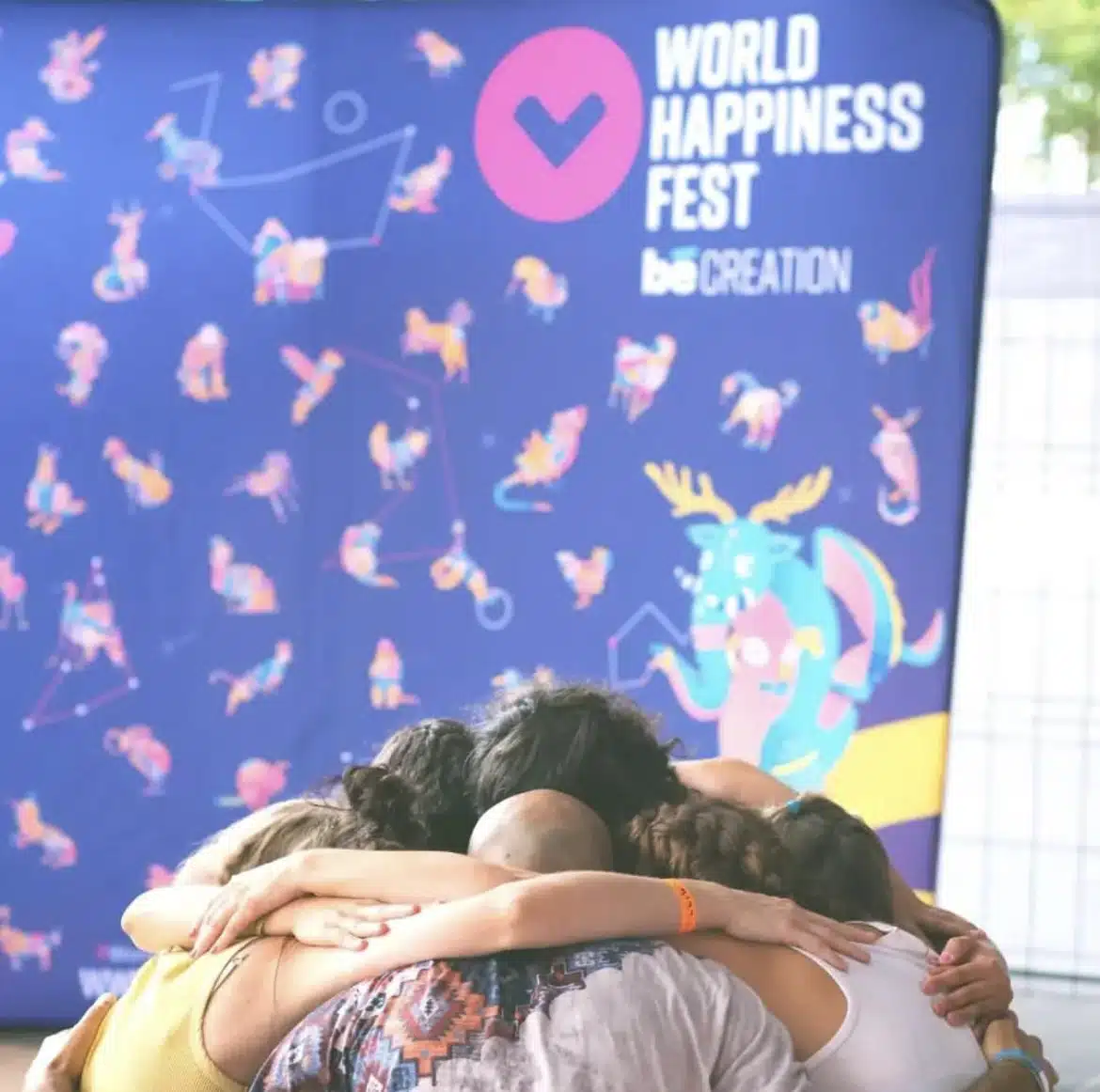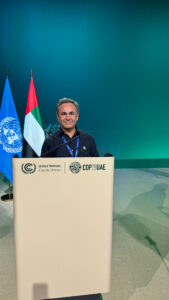
World Happiness Foundation Statement on SDG 15: Interspecies Harmony and Biodiversity
Introduction: Nature as Our Extended Family Life on land (United

Fostering a Global Family United by Abundance and Purpose. At the World Happiness Foundation, we envision Goal 17 not merely as “partnerships for the goals,” but as a profound call for global unity and collective action grounded in an abundance mindset. In this reframing, every person becomes a stakeholder in our shared future of well-being, and every nation, city, company, school, and community is invited to co-create a world where fundamental peace prevails. By uniting our efforts and wisdom across all divides, we amplify our impact as conscious catalysts of change. This position paper – the culmination of our SDG series – weaves together the insights from all previous goals into a new worldview of interdependence, co-creation, and higher purpose for humanity.
Humanity stands at a crossroads where interdependence is no longer optional – it is an existential imperative. Our challenges and dreams have outgrown borders; climate change, pandemics, and inequality prove that no nation or individual is separate from the rest of life. Happytalism, our proposed paradigm of abundance, makes unity its centerpiece. As Luis Miguel Gallardo observes, it emphasizes “the interdependence of species and the interconnection with nature and the planet”. In this view, humans are not isolated competitors but members of a global family whose well-being is entwined with the well-being of all people, creatures, and ecosystems. Science echoes this wisdom – from ecology to quantum physics – revealing a profound unity beneath our apparent separateness.
Embracing interdependence means reframing how we measure success and freedom. True freedom is not rugged individualism; it is the freedom that arises when all peoples are free from fear and want. Thus, where the old paradigm prized independence, the new paradigm celebrates collaborative freedom – recognizing that my prosperity, health, and peace are inseparable from yours. Goal 17 becomes the glue that binds all other goals together: it is about building the trust, empathy, and collective consciousness needed to solve problems together that we could never solve alone. As our Founder writes, global development must be “structured to honor our shared humanity and our collective relationship with a living Earth”. In practical terms, this means cultivating a mindset of one global family, where the joys or struggles of any community are felt and addressed by us all.
This shift from “me” to “we” calls for a radical upgrade in our consciousness. It invites each of us to identify not just with a country or culture, but with humanity as a whole – and indeed with all life. When we do so, partnerships cease to be just tactical agreements; they become expressions of our deeper understanding that we rise only by lifting others. In Happytalism, unity is strength: when others succeed, we all succeed, because life is not a zero-sum competition. Global unity, then, is both a moral principle and a survival strategy. It asks us to replace the illusion of separateness with an ethic of universal care, seeing every person as kin and every nation as a neighbor.
Our call for global unity rests on a fundamental reframing: moving beyond the scarcity mindset that pits groups against each other, and embracing an abundance mindset that unlocks co-creative solutions. For decades, international efforts have too often been framed as battles – nations scrambling for limited resources or clashing over interests. This scarcity-driven approach breeds fear, protectionism, and competition, undermining the very collaboration needed to achieve the SDGs. We see its effects when countries hoard vaccines or erect trade barriers, fearing that cooperation might leave them with less. Such a mindset splinters our global family and stalls our progress on shared threats like climate change and pandemics.
Happytalism offers a different path: a worldview of trust, generosity, and plenty. An abundance mindset recognizes that the collective creative capacity and compassion of humanity are inexhaustible resources. Rather than asking, “How do we divide scarce benefits?”, we ask, “How do we unleash human creativity and goodwill to make life better for everyone?” Instead of viewing partnerships as charity or compromise, we see them as multiplier opportunities – where joining forces produces far more than we could ever achieve alone. History shows that breakthroughs (whether curing diseases or innovating clean energy) happen faster when knowledge is shared openly and allies unite behind common goals.
Crucially, an abundance approach energizes people by focusing on positive visions rather than perpetual fights. Framing global issues as 17 separate crises – “battles” against poverty, hunger, disease, etc. – can lead to advocacy fatigue and burnout. It can feel like trying to plug 17 leaks in a dam. Happytalism flips the script: we rally the world around building something inspiring – an era of prosperity, wellness, and peace that lifts everyone up. Research in positive psychology affirms this: communities persevere more when united by an exciting vision rather than gripped by fear. We have seen sparks of this spirit in recent years: for example, altruism surged globally during the COVID-19 crisis, with people helping strangers about 18% more frequently in 2020–2023 than before the pandemic. This sustained rise in volunteering and kindness – across all regions and generations – shows the untapped abundance of goodwill in our human family. It is this abundance of empathy and innovation that Goal 17 seeks to catalyze on a planetary scale.
In our Happytalist reframing of all 17 SDGs, each goal is named for the positive outcome we collectively want to create, rather than just the problem to fix. Throughout this series, we have highlighted how an abundance mindset transforms our approach to every issue – from “No Poverty” to “Abundant Prosperity for All” (Goal 1), from “Climate Action” to “Planetary Well-Being & Climate Balance” (Goal 13), from “Peace, Justice & Strong Institutions” to “Peaceful Coexistence & Conscious Governance” (Goal 16). Taken together, these shifts represent a new worldview for global development – one that focuses on creating shared prosperity, joy, and harmony rather than fighting over shortages. Global Unity & Collective Action (Goal 17) is the capstone of this new paradigm: it is the means by which all the other abundance-minded goals are achieved. By weaving together economic, social, and environmental efforts into one fabric of collaboration, we ensure that progress in one area reinforces progress in others. In essence, Goal 17 is about building a “network of networks” – an ecosystem of partnerships so intertwined that positive change accelerates exponentially, like an upward spiral of well-being.
Achieving an abundant future for all will require co-creation on a scale humanity has never attempted before. The good news is that we already have a massive foundation to build upon: there are literally millions of organizations and institutions worldwide devoted to social impact. Recent data show approximately 10 million nonprofits globally and a similar number of social enterprises – together forming a vast community of change-makers well over 20 million strong. These range from small grassroots charities and local cooperatives to large NGOs, social businesses, and faith-based organizations. Add to that thousands of purpose-driven companies, city and regional governments, schools and universities, and countless informal community groups – and the potential coalition for good becomes awe-inspiring. Every sector and every level of society has a role to play.
Our call in Goal 17 is to unite this mosaic of actors into a “network of networks” – a global alliance of alliances – so that knowledge, resources, and innovation flow seamlessly toward our shared vision. This means breaking out of silos and actively forging connections across nations, cultures, and sectors. Governments must collaborate not only with each other, but with civil society, academia, and the private sector in genuine partnership. Cities and regions should share solutions through transnational networks (as many already do in climate alliances like C40 Cities). Companies embracing stakeholder capitalism and happytalism values can link up with NGOs and social enterprises to co-create market-based solutions to poverty, health, and education. Schools and universities – as hubs of learning and innovation – can partner internationally to spread best practices in mindful education and sustainability. Indigenous communities and youth movements have wisdom and passion that need to be at the table alongside policy-makers and CEOs. No stakeholder is too small; each brings a piece of the puzzle.
Critically, co-creation is not just collaboration in name only – it is a culture of mutual empowerment. It means designing with, not for, those we aim to help; it means all partners are equal contributors bringing their unique strengths. The World Happiness Foundation champions this principle in all our initiatives. Whether it’s our Cities of Happiness programs or our global well-being forums, we seek to convene diverse voices as co-creators of solutions, recognizing that wisdom is distributed throughout humanity. Goal 17 challenges every organization and community to do the same: to reach beyond comfort zones, listen deeply to others, pool expertise, and innovate together. When a humanitarian NGO teams up with a tech startup to tackle hunger with AI-driven farming, or when a municipal government engages local youth to co-design public spaces, that is Goal 17 in action. These cross-pollinations spark quantum leaps in impact – creative breakthroughs that isolated efforts could never achieve.
Of course, building a planetary network of collaboration requires enabling infrastructure. We need greater investment in platforms that facilitate knowledge-sharing, transparency, and coordination among partners. We applaud initiatives such as the United Nations SDG Partnership Platform and the UN Global Compact, which has enlisted over 20,000 companies in 160+ countries in advancing sustainability. We also recognize the importance of digital technology in connecting changemakers: online hubs, open-data repositories, and communication tools can dramatically lower the barriers to global teamwork. But beyond tools, the heart of co-creation is trust. Thus, a core task of Goal 17 is fostering trust between stakeholders – rich and poor nations, governments and civil society, generations young and old. Trust grows when we uphold principles of openness, accountability, and shared credit in partnerships. By being transparent and honoring each partner’s contributions, we create a collaborative environment where everyone feels invested in each other’s success.
Ultimately, Global Unity & Collective Action means that we, the peoples of the world, acknowledge our interdependence and choose to work as one. It means recognizing that fragmented efforts are no longer enough – we must synchronize and synergize our actions. Just as an ecosystem thrives through symbiosis, our human society can thrive by nurturing symbiotic relationships among all actors striving for good. Imagine the power of a network of networks where climate activists, healthcare workers, educators, engineers, farmers, artists, and spiritual leaders are all in continuous dialogue and concerted action. This is not a utopian fantasy; it is already beginning. The surge in global cooperation during recent crises shows that when the stakes are clear, humanity can come together in astonishing ways. Our task now is to make this unity permanent and purposeful, channeling it toward building the abundant world we know is possible.
Beyond the practical benefits of pooling resources and expertise, there is a deeper purpose to global partnership: it is a path to Fundamental Peace. In our position on SDG 16, we defined Fundamental Peace as a holistic state comprising freedom, elevated consciousness, and happiness for all. This is more than the absence of war – it is the presence of justice, inner peace, and shared joy at every level of society. Achieving such peace requires more than government treaties; it requires a global culture of peace and empathy. Goal 17 provides the social fabric for this culture. By encouraging dialogues and joint initiatives across every line that divides us – nationality, ethnicity, religion, political ideology – partnerships actively dissolve mistrust and misunderstanding. When people from different backgrounds work side by side on a common project, they build human relationships that become the foundation for peace between their communities and nations.
Moreover, partnership elevates our collective consciousness. As we collaborate and learn from one another, our perspective widens. We start to see through others’ eyes, gaining compassion and insight. This is why inner development and outer development must go hand in hand: Happytalism emphasizes mindfulness, compassion, and self-awareness as catalysts for better partnerships. A world of unity is not achieved only through policy, but through a shift in heart. By practicing openness and cooperation, we nurture qualities like forgiveness, humility, and empathy – the very qualities that underlie lasting peace. In essence, each successful partnership is a microcosm of the peaceful world we aim to create. It demonstrates that differences can be transcended in service of a higher goal, and that diversity can be our strength rather than a source of conflict.
We also view global unity as a spiritual or existential calling for humanity. Many wisdom traditions teach the oneness of humanity and the ideal of the “world as one family.” Today, science and global experience bring us to the same conclusion. It is our higher purpose to recognize this oneness and act accordingly. By aligning behind a shared mission – such as the SDGs reframed by Happytalism – we find meaning and connection beyond our individual lives. Partnership becomes an expression of love for our fellow beings and for future generations. It is, in a sense, a sacred duty to cooperate in protecting our planet and uplifting one another. In pursuing Goal 17’s ethos, we are learning to care at the broadest possible scale: planetary care. This nurtures not only external peace, but an inner peace born of knowing we are contributing to something greater than ourselves.
Finally, collective action guided by a higher purpose helps ensure that no one is left behind. When we truly operate as one human family, the suffering or exclusion of any member is unacceptable to the whole. Thus, global unity drives us to reach the poorest, the most marginalized, and bring them into the circle of development. It fuels social justice efforts and equitable resource-sharing (echoing our call for Shared Prosperity & Social Justice in SDG 10). It supports the strengthening of fair institutions and the rule of law (tying into Conscious Governance in SDG 16). In short, unity underpins every dimension of peace and justice. By seeing all goals – from poverty to climate to equality – as interconnected strands of peace, we ensure progress on one front reinforces progress on all. A partnership formed to provide clean water (SDG 6) also builds trust that can ease tensions (SDG 16); a partnership to expand education (SDG 4) empowers new voices to participate in governance (SDG 16) and innovation (SDG 9). Interdependence creates a virtuous cycle: cooperation begets peace, and peace enables deeper cooperation.
As the World Happiness Foundation, we are profoundly committed to accelerating this global unity and collective action movement. In our work with partners worldwide – including our consultative engagement with the United Nations – we pledge to be a bridge-builder and convener of the network of networks described above. Through initiatives like the World Happiness Agora forums, our Global Well-Being Alliance, and the World Happiness Observatory, we are connecting leaders and communities across all 17 SDGs to share solutions and amplify each other’s impact. We firmly believe in the principle of co-creation: that the best solutions arise when diverse stakeholders design them together. We will continue to practice radical collaboration in our own projects, and we urge other institutions to do the same. This includes advocating for more platforms that let grassroots voices be heard at the highest policy levels (and vice versa), and supporting educational programs that teach collaboration skills, empathy, and global citizenship from an early age.
Today, we extend a heartfelt invitation to everyone reading this statement: Join us in co-creating an abundant world of well-being. Whether you represent a government, an NGO, a business, a city, a school, or simply yourself as an individual citizen – your collaboration matters. Envision what could happen if the 20+ million social impact organizations around the globe all shared knowledge and coordinated actions, if the thousands of cities pursuing sustainable development formed a truly united network, if schools across continents collaborated to cultivate the next generation of compassionate leaders. Envision companies large and small partnering beyond competition to drive a well-being economy, and civil society groups pooling efforts to reach every last community. This is not a distant dream – it is unfolding now, and it needs your energy and creativity to flourish.
Our call is also to the global public: recognize your power as citizens in a connected age. Through everyday acts of kindness and cross-cultural friendship, you too advance Goal 17. Every time you volunteer for a cause, mentor someone from a different background, or simply keep an open mind about other cultures, you contribute to the fabric of global unity. The World Happiness Report has shown that generosity and social support strongly boost positive emotions and resilience. In other words, happiness itself grows when we help each other. By choosing cooperation over competition in daily life, we each become a node of peace in the broader human network. Goal 17 lives through us all.
As we wrap up this final SDG position, we reaffirm that all the Global Goals are interconnected – and partnerships are the threads that tie them together. Our journey from Goal 1 through Goal 16 has reframed each challenge as an opportunity for abundance: from eradicating poverty through shared prosperity and Happytalism, to nurturing education through mindfulness, to healing the planet through love and regeneration. Goal 17 is the grand orchestration of this symphony. It invites us to unite these themes into one harmonious effort. If we unite – across 20 million organizations and billions of hearts – there is no limit to what we can achieve. We can end hunger and ensure holistic health for all; we can unleash conscious innovation and regenerate our Earth; we can empower every individual and foster communities of happiness.
The path ahead is clear: Global unity is not only possible, it is already emerging. Let us now nurture it deliberately. Let us replace scarcity and fear with abundance and trust, knowing that cooperation multiplies the good for everyone. Let us recognize that in coming together we are writing a new chapter of human history – one defined not by conflict and division, but by partnership and purpose. In the story of human progress, it is time to turn the page from surviving to thriving together. We envision a world where people and nations see themselves as part of a global family, working hand in hand to ensure everyone can live with dignity, freedom, and joy. This is the essence of Happytalism and Fundamental Peace. This is the future we choose – a world of abundance, a world of Happytalism, a world where everyone can shine.
Together, as one collective human tribe, let us co-create the abundant future that awaits. The era of Global Unity & Collective Action has dawned – and every one of us is called to lead it.
Sources:

Introduction: Nature as Our Extended Family Life on land (United

Introduction: Our Blue Planet at a Crossroads Oceans cover over

Introduction: Climate Balance as the Foundation of Sustainable Happiness Climate